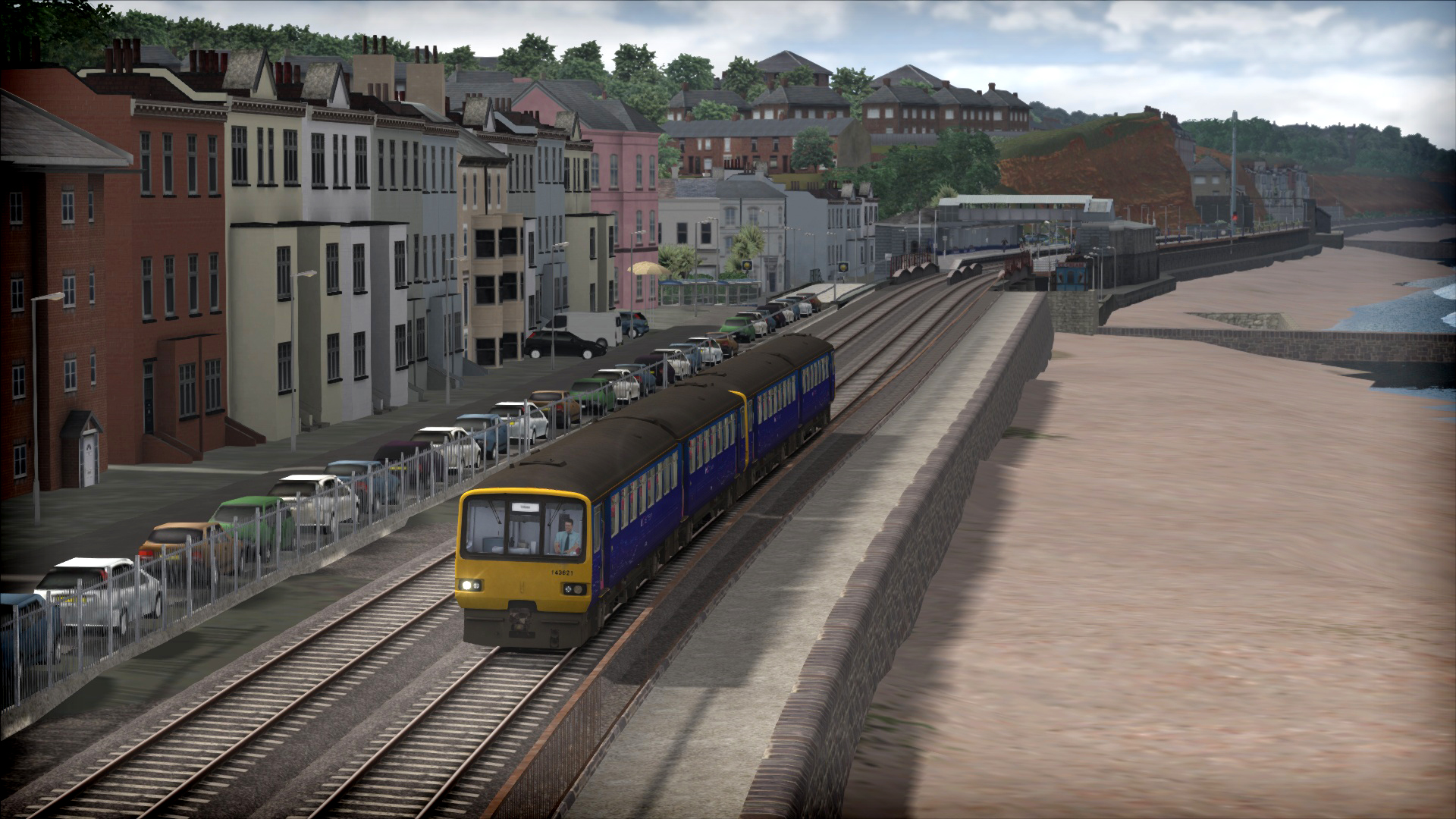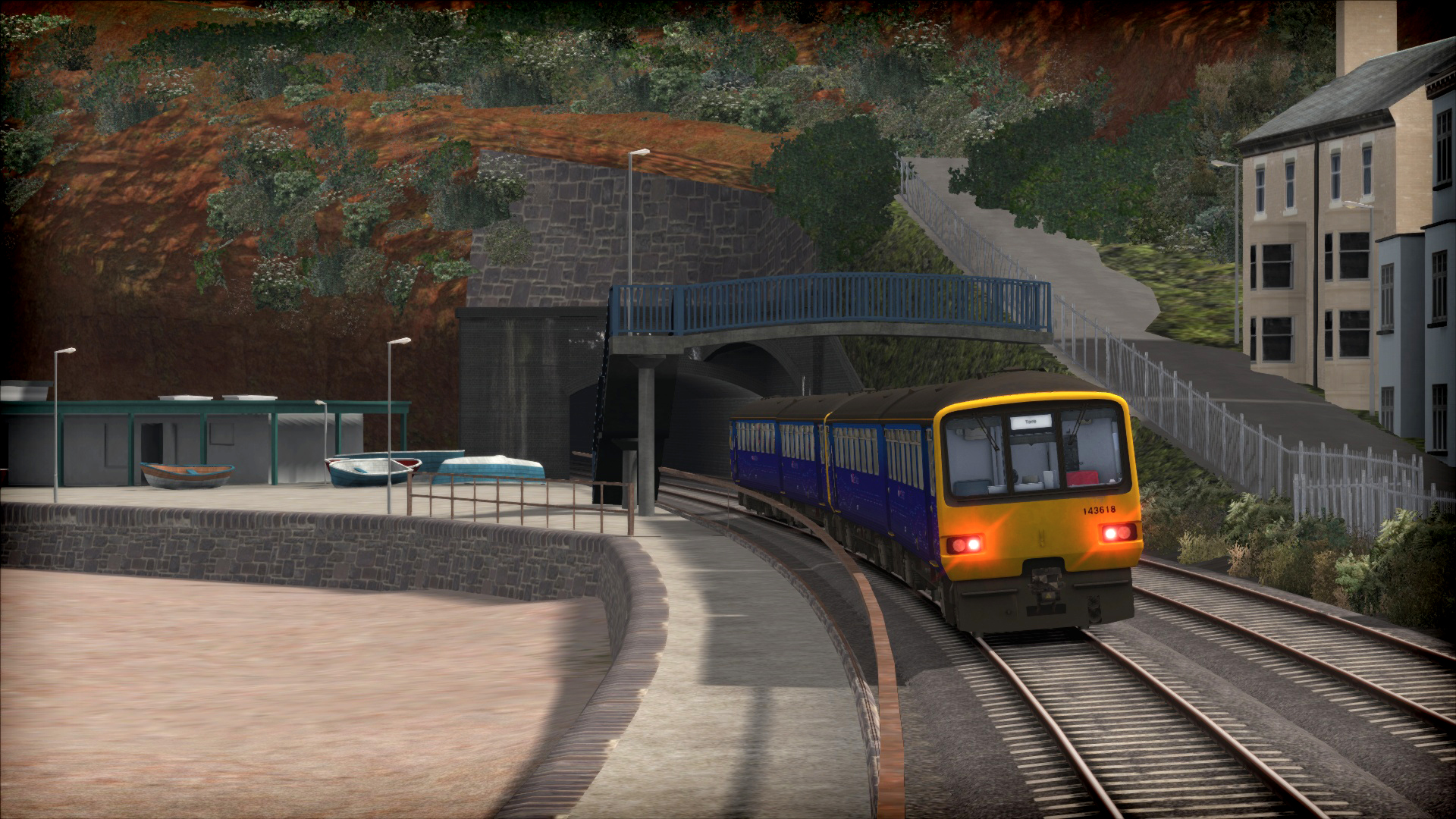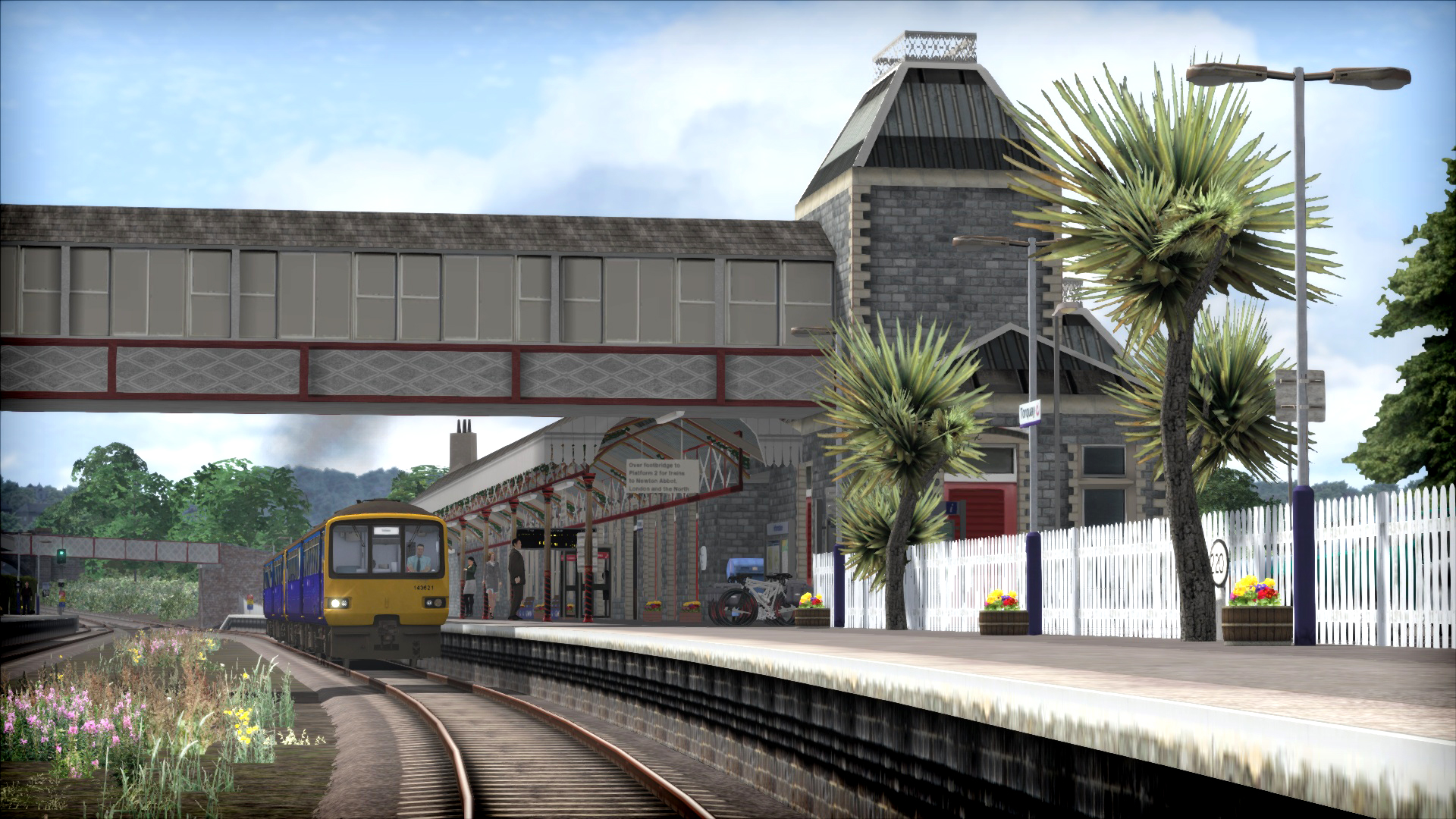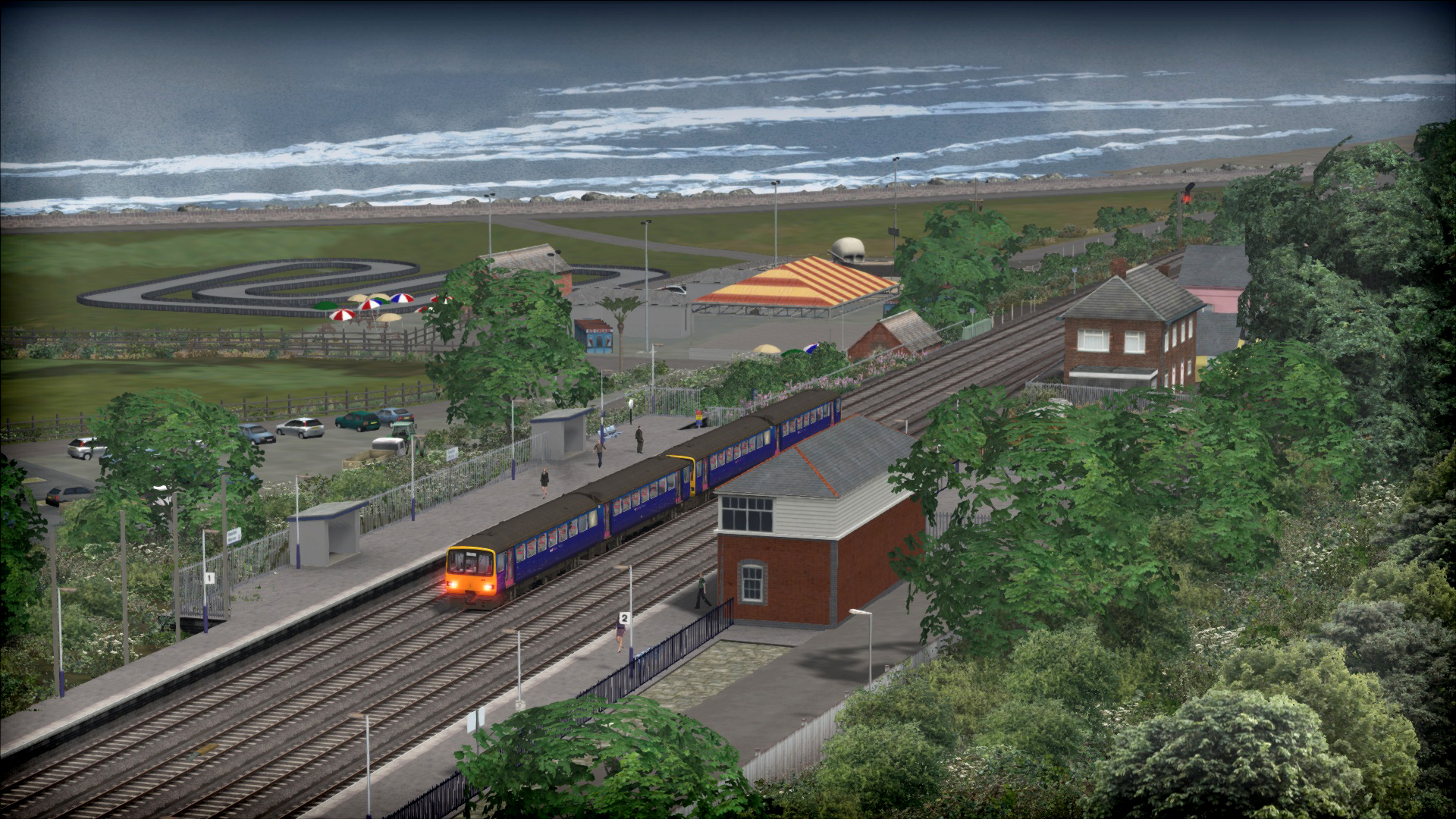Train Simulator: The Riviera Line: Exeter-Paignton Route Add-On
The English Riviera comes to Train Simulator in the beautifully picturesque ‘The Riviera Line: Exeter-Paignton’ route, which runs through some of the most scenic landscape in England.
Set in the area of the south west coast of England known as the English Riviera, due to its mild climate and sandy beaches, this picturesque line opened in May 1846, with a single track broad gauge line transporting holidaymakers from the city of Exeter to the Torbay resorts of Devon. By the end of the same year, the line had been extended to Newton Abbot, and two years later to Torquay – the current Torre station. It was not until 1859 that the Dartmouth and Torbay Railway linked the line from Torre to Paignton.
The 28 mile (45km) line was originally built to Isambard Kingdom Brunel’s broad gauge structure (2,140mm / 7ft 1/4in), a familiar sight on the Great Western Railway network at the time, and was designed for atmospheric power, although this lasted for less than a year from September 1847 - several pump houses can still be seen along the line, acting as reminders of this ill-fated system. The line was eventually converted to standard gauge in May 1892 and later widened to double tracks over the subsequent years.
The non-electrified line is probably best known for its seaside running, rocky coastal scenery and winding tracks, with several miles running along the South Devon sea wall, a picturesque scene during summer months but battered by strong northerly winds and high waves during winter months. Unusually for a UK route, palm trees can also be seen at several stations along the route.
On leaving Exeter St Davids Station, built by Brunel and opened on 1 May 1844, the line crosses the River Exe and passes through the suburbs of the City before heading into the Devon countryside. From Powderham Castle, the railway runs alongside the river and heads into Starcross, where the line first runs along the English Channel. Shortly after, Dawlish Warren comes into sight and for the next 1.5 miles (2.4km), the line runs along the famous South Devon Railway sea wall.
After Dawlish, the line ducks and dives through a series of tunnels cut into the rocky coves, making for a favourite spot of photographers. From Teignmouth to Hackney, the line runs along the River Teign, before heading inland once again to Newton Abbot. Leaving Newton Abbot, the railway widens out to four tracks; the two for Penzance diverge to the right at Aller Junction while the Riviera Line trains climb and then slowly descend towards the sea at Torquay.
Fast passenger services along the line are handled by modern high speed DMUs, including Voyagers and HSTs; stopping services are served by Class 142s, 143s, 150s and 159s. Freight operations are not a major feature of the line but can be seen occasionally.
Included with the route is a First Great Western Class 143, recreating the ‘Pacer’ two-car DMU that is a stalwart of the line. Based on a Walter Alexander bus body, the ‘Nodding Donkey’ was introduced to the rail network in the mid-1980s and is well known for its unsophisticated bouncy ride and meagre seating, faithfully recreated in this model. Also included is a Quick Drive compatible High Speed Train (HST) in First Great Western livery.
More scenarios are available on Steam Workshop online and in-game. Train Simulator’s Steam Workshop scenarios are free and easy to download, adding many more hours of exciting gameplay. With scenarios being added daily, why don’t you check it out now!
Set in the area of the south west coast of England known as the English Riviera, due to its mild climate and sandy beaches, this picturesque line opened in May 1846, with a single track broad gauge line transporting holidaymakers from the city of Exeter to the Torbay resorts of Devon. By the end of the same year, the line had been extended to Newton Abbot, and two years later to Torquay – the current Torre station. It was not until 1859 that the Dartmouth and Torbay Railway linked the line from Torre to Paignton.
The 28 mile (45km) line was originally built to Isambard Kingdom Brunel’s broad gauge structure (2,140mm / 7ft 1/4in), a familiar sight on the Great Western Railway network at the time, and was designed for atmospheric power, although this lasted for less than a year from September 1847 - several pump houses can still be seen along the line, acting as reminders of this ill-fated system. The line was eventually converted to standard gauge in May 1892 and later widened to double tracks over the subsequent years.
The non-electrified line is probably best known for its seaside running, rocky coastal scenery and winding tracks, with several miles running along the South Devon sea wall, a picturesque scene during summer months but battered by strong northerly winds and high waves during winter months. Unusually for a UK route, palm trees can also be seen at several stations along the route.
On leaving Exeter St Davids Station, built by Brunel and opened on 1 May 1844, the line crosses the River Exe and passes through the suburbs of the City before heading into the Devon countryside. From Powderham Castle, the railway runs alongside the river and heads into Starcross, where the line first runs along the English Channel. Shortly after, Dawlish Warren comes into sight and for the next 1.5 miles (2.4km), the line runs along the famous South Devon Railway sea wall.
After Dawlish, the line ducks and dives through a series of tunnels cut into the rocky coves, making for a favourite spot of photographers. From Teignmouth to Hackney, the line runs along the River Teign, before heading inland once again to Newton Abbot. Leaving Newton Abbot, the railway widens out to four tracks; the two for Penzance diverge to the right at Aller Junction while the Riviera Line trains climb and then slowly descend towards the sea at Torquay.
Fast passenger services along the line are handled by modern high speed DMUs, including Voyagers and HSTs; stopping services are served by Class 142s, 143s, 150s and 159s. Freight operations are not a major feature of the line but can be seen occasionally.
Included with the route is a First Great Western Class 143, recreating the ‘Pacer’ two-car DMU that is a stalwart of the line. Based on a Walter Alexander bus body, the ‘Nodding Donkey’ was introduced to the rail network in the mid-1980s and is well known for its unsophisticated bouncy ride and meagre seating, faithfully recreated in this model. Also included is a Quick Drive compatible High Speed Train (HST) in First Great Western livery.
Scenarios
Six scenarios for the route:- Class 143: First Look
- Class 143: Preparations
- Class 143: Service Practice
- Rescue Diversion
- Busy Day on the Coast
- Storm Consequences
More scenarios are available on Steam Workshop online and in-game. Train Simulator’s Steam Workshop scenarios are free and easy to download, adding many more hours of exciting gameplay. With scenarios being added daily, why don’t you check it out now!
Key Features
- 28 mile (45km) Riviera Line route from Exeter to Paignton
- Seaside running along the South Devon Railway sea wall
- First Great Western Class 143 ‘Pacer’ DMU
- First Great Western HST (Quick Drive only)
- Scenarios for the route
- Quick Drive compatible
- Download size: 1,600mb
DB and the DB logo are trademarks of Deutsche Bahn AG. Southeastern is an exclusive copyright and mark of London & South Eastern Railway Ltd. All rights reserved. Used with Permission. Southern Pacific is a trademark, used under license. The Union Pacific shield is a trademark of the Union Pacific Railroad company . All other trademarks are the property of their respective owners.









